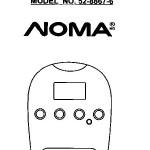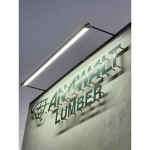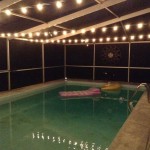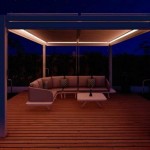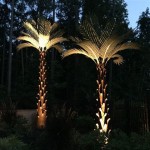Lampu LED Outdoor Solar Cell: A Comprehensive Overview
Lampu LED outdoor solar cell, commonly referred to as solar-powered outdoor LED lights, represent a rapidly evolving technology within the broader landscape of renewable energy and outdoor lighting solutions. These lights harness sunlight, convert it into electrical energy, and subsequently illuminate outdoor spaces using efficient LED technology. This article provides a detailed examination of their components, operational principles, advantages, and considerations for implementation.
Components of a Solar-Powered Outdoor LED Light
Understanding the individual components is crucial to appreciating the functionality and limitations of solar-powered outdoor LED lights. A typical unit consists of several key elements working in concert.
The
solar panel
is the primary energy-harvesting component. It is composed of photovoltaic (PV) cells, which are semiconductor devices that convert sunlight directly into direct current (DC) electricity. The efficiency of the solar panel, measured as the percentage of sunlight converted into electricity, is a critical factor in determining the overall performance of the light. Larger panels generally collect more energy, but panel size needs to be balanced against aesthetic considerations and application requirements. Common materials used in solar panels for these lights include monocrystalline silicon, polycrystalline silicon, and thin-film technologies. Monocrystalline panels tend to be more efficient but also more expensive.The
rechargeable battery
stores the electrical energy generated by the solar panel. This stored energy is used to power the LED light during periods of darkness or low sunlight intensity. Lithium-ion batteries are commonly employed due to their high energy density, relatively long lifespan, and ability to handle numerous charge-discharge cycles. Nickel-metal hydride (NiMH) batteries are also used in some models, although they generally offer lower energy density and a shorter lifespan compared to lithium-ion batteries. The battery's capacity, measured in milliampere-hours (mAh), determines the duration for which the light can operate on a single full charge.The
LED light source
is responsible for producing illumination. LEDs (light-emitting diodes) are semiconductor devices that emit light when an electric current passes through them. Compared to traditional incandescent or fluorescent bulbs, LEDs offer significantly higher energy efficiency, longer lifespan, and improved durability. The brightness of the LED light, measured in lumens, determines the intensity of the illumination. The color temperature, measured in Kelvin (K), affects the perceived warmth or coolness of the light. Lower Kelvin values (e.g., 2700K) produce a warmer, yellowish light, while higher Kelvin values (e.g., 6000K) produce a cooler, bluish-white light.The
control circuitry
is an electronic circuit that manages the charging of the battery, the operation of the LED light, and various other functions, such as light sensing and motion detection. This circuitry prevents overcharging and over-discharging of the battery, maximizing its lifespan. It also controls the activation and deactivation of the LED light based on ambient light levels, typically using a photocell (light sensor). Some control circuits incorporate motion sensors that activate the light only when movement is detected, conserving battery power. Advanced control circuits may include features such as dimming control, programmable timers, and wireless communication capabilities.The
housing and mounting structure
provides physical protection for the internal components and facilitates the installation of the light in the desired location. The housing is typically made of durable materials such as plastic, metal, or composite materials, designed to withstand outdoor conditions, including rain, snow, and extreme temperatures. The mounting structure can vary depending on the specific application, including options for wall mounting, post mounting, and stake mounting.Advantages of Using Solar-Powered Outdoor LED Lights
Solar-powered outdoor LED lights offer a compelling range of advantages, making them an attractive alternative to traditional grid-powered lighting systems.
One of the most significant advantages is
energy efficiency and cost savings
. These lights eliminate the need for electricity from the grid, reducing energy consumption and lowering electricity bills. The energy used is derived from a renewable source, leading to significant long-term cost savings. Although the initial cost of solar-powered lights may be higher than that of traditional lights, the reduced energy costs and minimal maintenance requirements often result in a lower total cost of ownership over the lifespan of the product.Environmental benefits
are another key advantage. By utilizing solar energy, these lights reduce reliance on fossil fuels, thereby decreasing greenhouse gas emissions and mitigating the impact of climate change. The use of LEDs further enhances the environmental benefits due to their low energy consumption and lack of toxic materials, such as mercury, which are found in some traditional lighting technologies. The overall environmental footprint of solar-powered outdoor LED lights is significantly lower compared to grid-powered lighting options.Ease of installation and portability
provides a significant advantage. Because they operate independently of the electrical grid, solar-powered lights can be installed in locations where running electrical wiring would be difficult or expensive. This makes them ideal for lighting remote areas, pathways, gardens, and other outdoor spaces without access to power outlets. The absence of wires also eliminates the risk of electrical hazards and reduces the complexity of installation, allowing for a more flexible and portable lighting solution. Many models are designed for easy DIY installation, requiring minimal tools and technical expertise.Low maintenance requirements
also make them attractive. Solar-powered outdoor LED lights typically require very little maintenance. The LED light source has a long lifespan, often lasting for tens of thousands of hours, reducing the need for frequent bulb replacements. The rechargeable battery may eventually require replacement after several years of use, but this is a relatively simple and infrequent task. Regular cleaning of the solar panel to remove dirt and debris can help maintain its efficiency, but this can be done with a simple wipe down.Considerations When Selecting and Implementing Solar-Powered Outdoor LED Lights
While solar-powered outdoor LED lights offer numerous benefits, it is important to carefully consider several factors when selecting and implementing them.
Sunlight availability
is a critical consideration. The performance of solar-powered lights is directly dependent on the amount of sunlight they receive. It is essential to ensure that the lights are positioned in locations where they receive sufficient direct sunlight, especially during the peak hours of the day. Shaded areas or locations with limited sunlight exposure may result in reduced battery charging and diminished performance. Consider the orientation of the lights and any potential obstructions, such as trees or buildings, that may block sunlight. In regions with long periods of cloudy weather, it may be necessary to choose models with larger solar panels or batteries to ensure adequate performance.Battery capacity and light duration
are important factors to consider. The battery capacity should be sufficient to power the light for the desired duration, even on cloudy days or during periods of prolonged darkness. Consider the typical hours of operation needed each night and select a model with a battery capacity that can meet those needs. Some models offer different operating modes, such as dimming or motion activation, which can help extend battery life. Check the manufacturer's specifications for the battery capacity and the expected light duration per charge.Light output and coverage area
should be appropriate for the application. The brightness of the LED light, measured in lumens, should be sufficient to illuminate the desired area effectively. Consider the size of the area to be lit and the desired level of illumination. For smaller areas, such as pathways or gardens, a lower lumen output may be sufficient. For larger areas, such as driveways or parking lots, a higher lumen output may be necessary. The beam angle of the LED light also affects the coverage area. A wider beam angle will provide broader illumination, while a narrower beam angle will provide more focused illumination.Durability and weather resistance
are essential for outdoor applications. Solar-powered lights should be designed to withstand the harsh conditions of the outdoor environment, including rain, snow, extreme temperatures, and UV radiation. Look for models with housings made of durable materials, such as weather-resistant plastic or metal. Ensure that the lights are properly sealed to prevent water intrusion. The ingress protection (IP) rating indicates the degree of protection against dust and water. A higher IP rating indicates better protection. For example, an IP65 rating indicates that the light is protected against dust and water jets.Cost and warranty
are important factors to consider. Compare the prices of different models and brands, taking into account the features, performance, and warranty. A longer warranty provides assurance of the product's quality and reliability. Consider the total cost of ownership, including the initial purchase price, battery replacement costs, and any potential repair costs. Read customer reviews and ratings to get an idea of the product's performance and reliability in real-world conditions.Selecting the correct type based on the intended application is also critical. Solar path lights are generally low to the ground and used to illuminate walkways. Solar spotlights are used to highlight specific features or areas of interest. Solar flood lights are used to provide broad illumination over larger areas. Solar security lights often incorporate motion sensors to detect movement and activate the light, providing added security. Solar string lights are decorative lights used to create a festive atmosphere. Each type has varying lumen outputs, battery capacities, and design features to meet specific needs.

Promo Lampu Sorot Taman Led Tenaga Surya Solar Panel Outdoor Light Ip67 25w Jakarta Barat Kasma Tokopedia

Jual Lampu Led Sorot 50w 50 W Solar Sel Outdoor 50watt Panel Surya Jakarta Pusat Starlight Electric Tokopedia
Jual Lampu Sorot Solar Cell Led Outdoor 50w Tenaga Matahari 50 Watt Ee Indonesia
Jual Lampu Tenaga Surya Solar Cell Panel Sensor Cahaya Taman Rumah Bohlam 2 Led Double Matahari Outdoor Ee Indonesia

Promo Lampu Taman Halaman Sorot Outdoor Solar Panel Tenaga Matahari 10 Led Diskon 23 Di Er Alice Jaya Abadi Cipinang Muara Kota Jakarta Timur Blibli

Jual Lampu Taman Tenaga Surya Sorot Outdoor Solar Cell Waterproof 20 Led Kota Denpasar Dlia Akara Tokopedia

Baimu Led Lampu Solar Pendant Light Outdoor Waterproof Garden Lights Double Headed Hanging Panel Bulb Indoor House Ceiling Lamp With Remote Control For Yard Gate Camping Street Warm White 太阳能灯室内

Outdoor Waterproof Lamps Solaires De Poche Lampu Solar Cell 500w Solor Wrestler 8 Led Garden Lights China Lamp Light Made In Com

Promo Lampu Sorot Taman Led Solar Cell Tenaga Surya Rgb 18 Jakarta Utara Bagus Tokopedia

Promo Lampu Tenaga Surya Taman Tembok Solar Panel 56 Led Outdoor Diskon 23 Di Er Gogodan Bidaracina Kota Jakarta Timur Blibli
